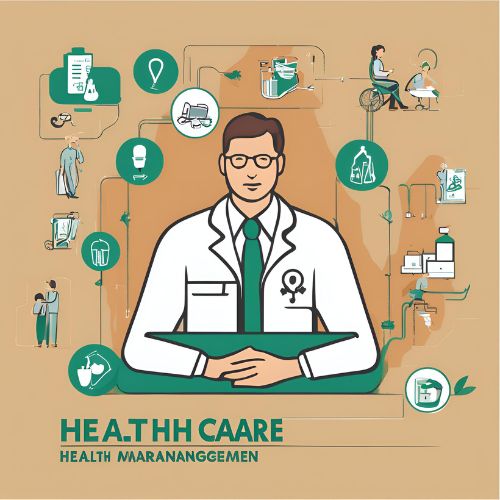
⭐️ Health care waste management is a critical component of maintaining a safe and healthy environment within medical facilities and the surrounding community. Proper handling, treatment, and disposal of health care waste prevent the spread of infections and ensure regulatory compliance. This comprehensive manual on health care waste management provides essential guidelines and practices to help health care facilities manage their waste effectively.
Understanding Health Care Waste
What is Health Care Waste?
⭐️ Health care waste refers to all the waste generated by health care establishments, research facilities, and laboratories. This includes a wide range of materials such as syringes, bandages, used medical instruments, pharmaceuticals, and biological waste.
Categories of Health Care Waste
⭐️ Health care waste is generally categorized into the following types:
- Infectious waste: Waste contaminated with blood and other bodily fluids.
- Pathological waste: Human tissues, organs, and body parts.
- Sharps waste: Needles, scalpels, and other sharp instruments.
- Chemical waste: Disinfectants, solvents, and other chemicals used in health care.
- Pharmaceutical waste: Expired or unused medications.
- Radioactive waste: Waste containing radioactive materials.
- General non-hazardous waste: Waste that does not pose any biological, chemical, or physical hazard.
The Importance of Health Care Waste Management
Health and Safety
⭐️ Proper health care waste management is crucial for protecting health care workers, patients, and the public from potential infections and injuries. It minimizes the risk of exposure to harmful pathogens and hazardous substances.
Environmental Protection
⭐️ Effective waste management practices prevent the release of harmful substances into the environment, protecting water sources, soil, and air quality. This is essential for maintaining ecological balance and public health.
Regulatory Compliance
⭐️ Adhering to waste management regulations and guidelines ensures that health care facilities comply with local, national, and international laws. This helps avoid legal penalties and promotes a culture of safety and responsibility.
Key Components of a Health Care Waste Management Manual
Waste Segregation
⭐️ Waste segregation is the process of separating different types of waste at the point of generation. This is a fundamental step in managing health care waste effectively.
- Color-coded bins: Use color-coded containers to distinguish between different types of waste. For example, yellow for infectious waste, red for sharps, and blue for general waste.
- Labeling: Clearly label all waste containers to indicate the type of waste they hold and any special handling requirements.
Waste Collection and Transportation
⭐️ Proper collection and transportation of health care waste are essential to prevent contamination and ensure safe disposal.
- Regular collection schedules: Establish and adhere to regular waste collection schedules to prevent waste accumulation.
- Safe transportation: Use secure, leak-proof containers for transporting waste. Ensure that transportation routes minimize the risk of exposure to the public and environment.
Waste Treatment and Disposal
⭐️ Treatment and disposal methods vary depending on the type of waste. Proper treatment renders waste non-infectious and safe for final disposal.
- Autoclaving: Use autoclaves to sterilize infectious waste, rendering it non-hazardous.
- Incineration: Incinerate pathological and pharmaceutical waste to destroy harmful substances.
- Chemical disinfection: Apply chemical disinfectants to treat certain types of infectious waste.
- Landfill disposal: Dispose of treated waste in designated landfill sites, ensuring that non-hazardous waste is managed appropriately.
Training and Education
⭐️ Continuous training and education for health care workers on waste management practices are essential for maintaining safety and compliance.
- Regular training sessions: Conduct regular training sessions on waste segregation, handling, and disposal.
- Educational materials: Provide easy-to-understand manuals, posters, and guidelines to reinforce best practices.
- Compliance monitoring: Regularly monitor and evaluate compliance with waste management protocols to identify areas for improvement.
Emergency Preparedness
⭐️ Having an emergency preparedness plan in place is crucial for managing unexpected incidents involving health care waste.
- Spill response plan: Develop a plan for responding to waste spills, including containment, cleanup, and reporting procedures.
- Personal protective equipment (PPE): Ensure that adequate PPE is available for handling waste and responding to emergencies.
- Communication plan: Establish a clear communication plan to notify relevant authorities and stakeholders in the event of an emergency.
Best Practices for Health Care Waste Management
Implementing Waste Minimization Strategies
⭐️ Reducing the amount of waste generated is a key aspect of effective waste management.
- Source reduction: Choose products and materials that generate less waste.
- Recycling programs: Implement recycling programs for materials such as paper, plastic, and glass.
- Reusing items: Where possible, use reusable items instead of disposable ones.
Ensuring Proper Waste Handling
⭐️ Proper handling of waste at all stages is critical to maintaining safety and compliance.
- Use of PPE: Health care workers should always use appropriate PPE when handling waste.
- Hand hygiene: Promote and enforce strict hand hygiene practices after handling waste.
- Safe handling protocols: Develop and implement protocols for the safe handling of sharps and other hazardous waste.
Maintaining Documentation and Records
⭐️ Keeping accurate records is essential for monitoring waste management practices and ensuring regulatory compliance.
- Waste tracking: Implement a waste tracking system to monitor the types and quantities of waste generated, treated, and disposed of.
- Regulatory documentation: Maintain records of compliance with local, national, and international waste management regulations.
- Audit trails: Conduct regular audits to ensure that waste management practices are being followed correctly.
Challenges and Solutions in Health Care Waste Management
Common Challenges
⭐️ Health care facilities often face several challenges in managing waste effectively:
- Lack of awareness: Insufficient awareness and training among health care workers can lead to improper waste handling and disposal.
- Resource constraints: Limited financial and logistical resources can hinder the implementation of best practices.
- Regulatory compliance: Keeping up with changing regulations and ensuring compliance can be challenging.
Effective Solutions
⭐️ Addressing these challenges requires a proactive approach:
- Continuous training: Provide ongoing training and education to health care workers on waste management practices.
- Resource allocation: Allocate sufficient resources for waste management, including budget, personnel, and equipment.
- Engagement with authorities: Maintain open communication with regulatory authorities to stay updated on regulations and ensure compliance.

Conclusion
⭐️ Health care waste management is a critical aspect of maintaining a safe and healthy environment within medical facilities and the surrounding community. By following the guidelines and best practices outlined in this comprehensive manual, health care facilities can effectively manage their waste, protect public health, and ensure regulatory compliance.
⭐️ Proper waste segregation, collection, transportation, treatment, and disposal are essential steps in this process. Continuous training, education, and emergency preparedness further enhance the effectiveness of waste management practices.
⭐️ Addressing common challenges with proactive solutions ensures that health care facilities can manage their waste responsibly, ultimately contributing to a safer and healthier world.



















